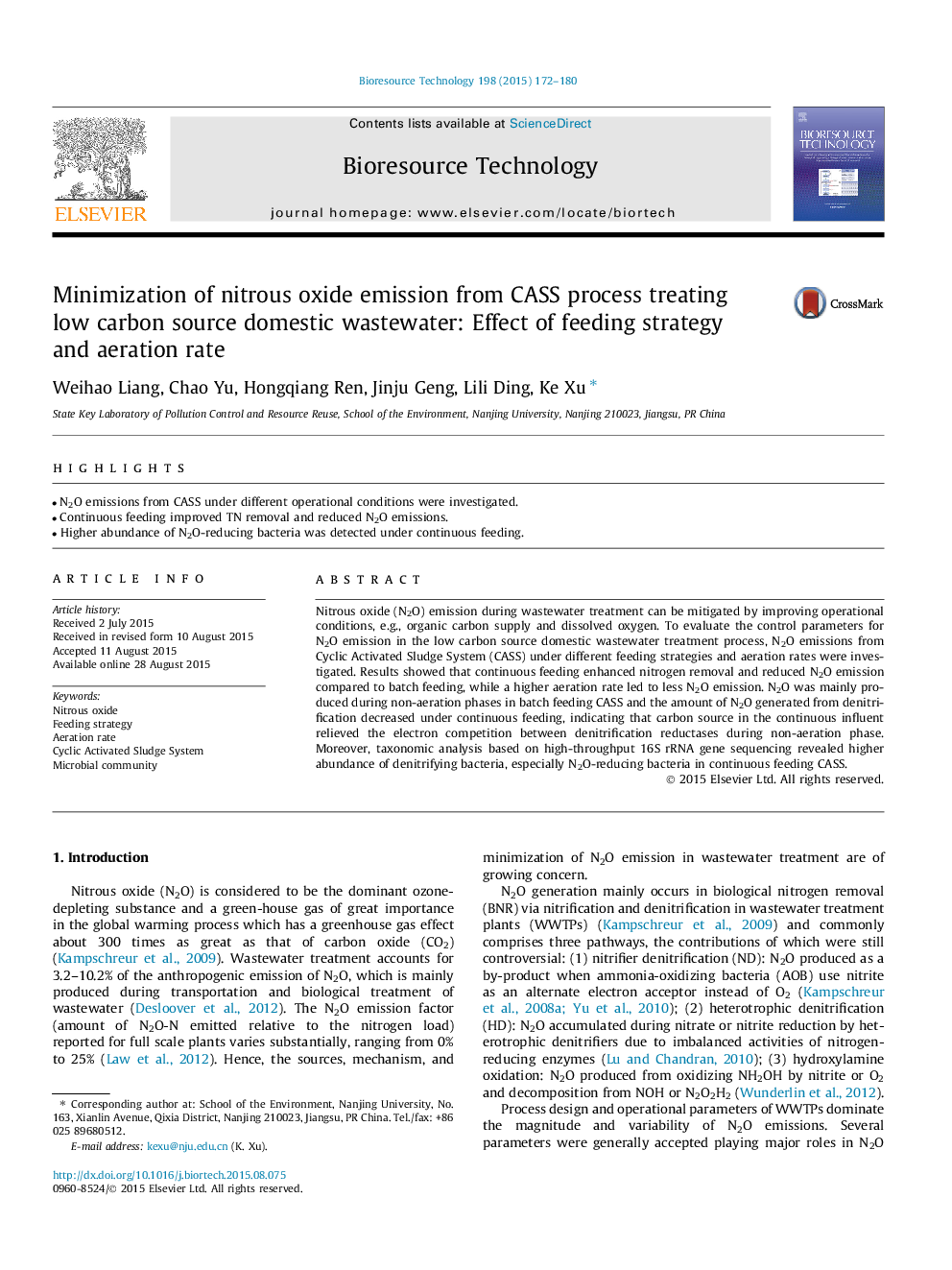| Article ID | Journal | Published Year | Pages | File Type |
|---|---|---|---|---|
| 679412 | Bioresource Technology | 2015 | 9 Pages |
Abstract
Nitrous oxide (N2O) emission during wastewater treatment can be mitigated by improving operational conditions, e.g., organic carbon supply and dissolved oxygen. To evaluate the control parameters for N2O emission in the low carbon source domestic wastewater treatment process, N2O emissions from Cyclic Activated Sludge System (CASS) under different feeding strategies and aeration rates were investigated. Results showed that continuous feeding enhanced nitrogen removal and reduced N2O emission compared to batch feeding, while a higher aeration rate led to less N2O emission. N2O was mainly produced during non-aeration phases in batch feeding CASS and the amount of N2O generated from denitrification decreased under continuous feeding, indicating that carbon source in the continuous influent relieved the electron competition between denitrification reductases during non-aeration phase. Moreover, taxonomic analysis based on high-throughput 16S rRNA gene sequencing revealed higher abundance of denitrifying bacteria, especially N2O-reducing bacteria in continuous feeding CASS.
Related Topics
Physical Sciences and Engineering
Chemical Engineering
Process Chemistry and Technology
Authors
Weihao Liang, Chao Yu, Hongqiang Ren, Jinju Geng, Lili Ding, Ke Xu,
